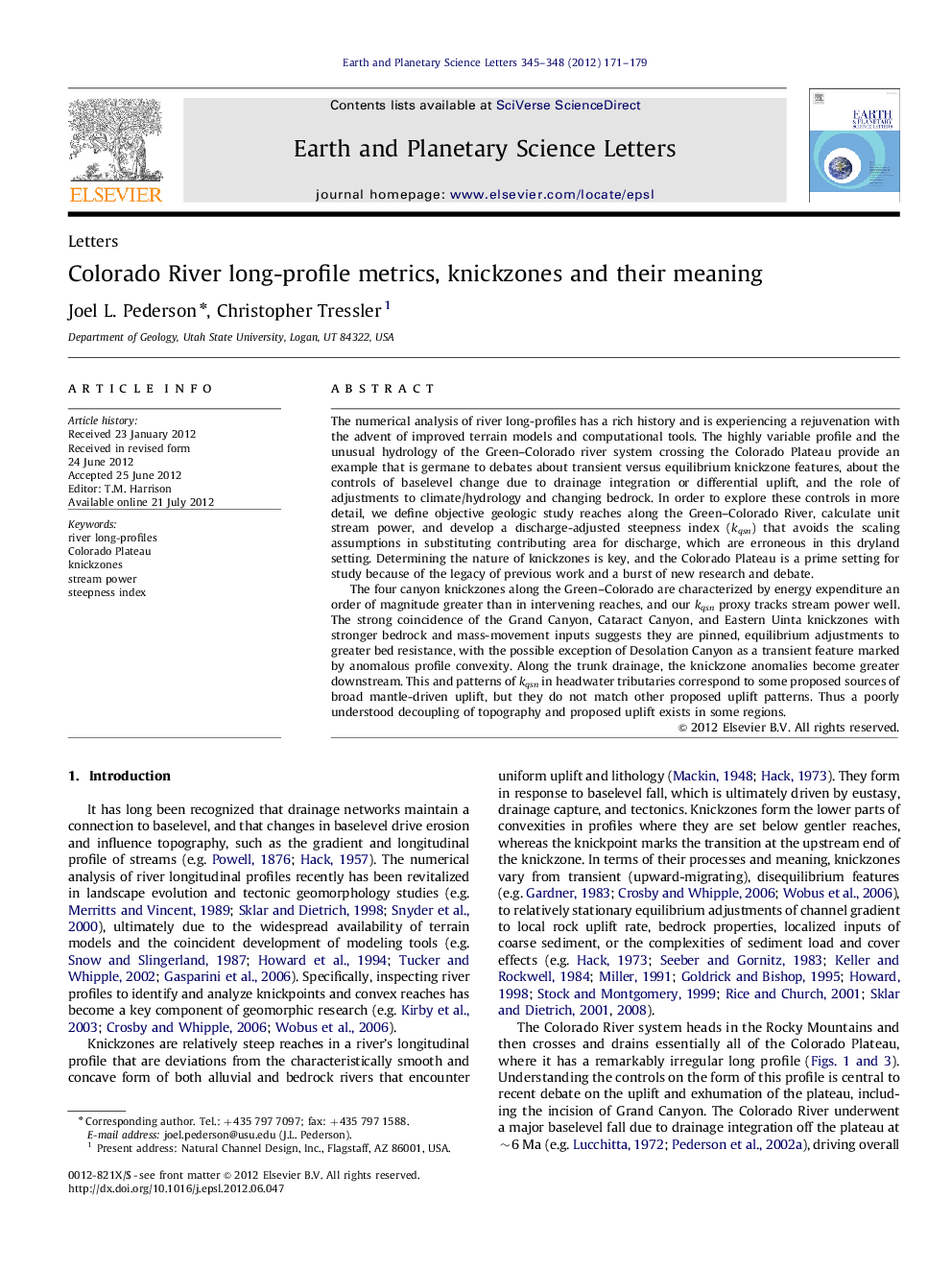| کد مقاله | کد نشریه | سال انتشار | مقاله انگلیسی | نسخه تمام متن |
|---|---|---|---|---|
| 6430589 | 1634799 | 2012 | 9 صفحه PDF | دانلود رایگان |

The numerical analysis of river long-profiles has a rich history and is experiencing a rejuvenation with the advent of improved terrain models and computational tools. The highly variable profile and the unusual hydrology of the Green-Colorado river system crossing the Colorado Plateau provide an example that is germane to debates about transient versus equilibrium knickzone features, about the controls of baselevel change due to drainage integration or differential uplift, and the role of adjustments to climate/hydrology and changing bedrock. In order to explore these controls in more detail, we define objective geologic study reaches along the Green-Colorado River, calculate unit stream power, and develop a discharge-adjusted steepness index (kqsn) that avoids the scaling assumptions in substituting contributing area for discharge, which are erroneous in this dryland setting. Determining the nature of knickzones is key, and the Colorado Plateau is a prime setting for study because of the legacy of previous work and a burst of new research and debate.The four canyon knickzones along the Green-Colorado are characterized by energy expenditure an order of magnitude greater than in intervening reaches, and our kqsn proxy tracks stream power well. The strong coincidence of the Grand Canyon, Cataract Canyon, and Eastern Uinta knickzones with stronger bedrock and mass-movement inputs suggests they are pinned, equilibrium adjustments to greater bed resistance, with the possible exception of Desolation Canyon as a transient feature marked by anomalous profile convexity. Along the trunk drainage, the knickzone anomalies become greater downstream. This and patterns of kqsn in headwater tributaries correspond to some proposed sources of broad mantle-driven uplift, but they do not match other proposed uplift patterns. Thus a poorly understood decoupling of topography and proposed uplift exists in some regions.
⺠Long-profile analysis is increasingly important in landscape evolution research. ⺠We develop a revised metric that captures hydrologic variability better. ⺠The Colorado River has an unusually irregular profile with four canyon knickzones. ⺠Linkages to uplift mechanisms are hotly debated; the role of bedrock is overlooked. ⺠Some anomalies correspond to mantle-driven uplift; other patterns do not.
Journal: Earth and Planetary Science Letters - Volumes 345â348, September 2012, Pages 171-179